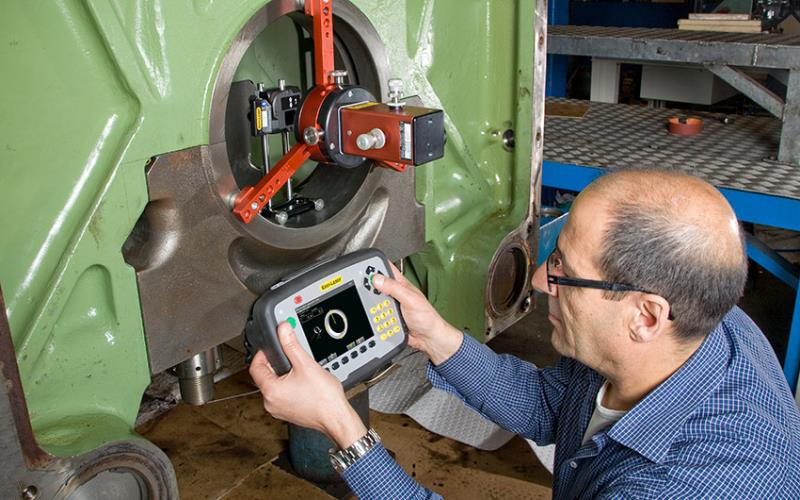When it comes to ensuring the optimal performance of machinery, precision is key. Misalignment can lead to significant wear and tear, decreased efficiency, and increased downtime. To combat these issues, selecting the right laser alignment tool for your application is crucial. This guide will walk you through the various types of laser alignment tools available, their benefits, and how to choose the best one for your specific needs.
Understanding Laser Alignment Tools
Laser alignment tools are devices used to measure the alignment of rotating machinery. They utilize laser technology to provide accurate measurements, enabling technicians to make precise adjustments. The primary goal of these tools is to minimize misalignment, which can cause excessive vibration, energy loss, and component failure.
Types of Laser Alignment Tools
There are several types of laser alignment tools available on the market. Understanding these options will help you determine which tool best fits your application.
1. Portable Laser Alignment Tools
Portable laser alignment tools are designed for quick setups and ease of use. These tools are ideal for fieldwork and can be easily transported between different machines. Many portable options are equipped with Bluetooth connectivity, allowing for easy data transfer and analysis on a mobile device.
2. Fixed Laser Alignment Systems
Fixed laser alignment systems are installed permanently in a production environment. They provide continuous monitoring and real-time feedback on alignment status. These systems are ideal for high-volume operations where uptime is critical.
3. Wireless Laser Alignment Tools
Wireless laser alignment tools eliminate the need for cumbersome cables, providing greater flexibility in setup. These tools often come with user-friendly interfaces and can store multiple alignment reports for future reference. Wireless options are particularly beneficial in large facilities where machines are spread out over significant distances.
4. Self-Leveling Laser Alignment Tools
Self-leveling laser alignment tools are designed to automatically adjust for any misalignment during the measurement process. This feature simplifies the setup and ensures accurate readings, even on uneven surfaces. These tools are perfect for applications where precise alignment is necessary but where manual leveling may introduce errors.
Benefits of Using Laser Alignment Tools
Investing in a laser alignment tool offers numerous advantages for maintenance and operations. Here are some key benefits:
- Increased Equipment Life: By ensuring proper alignment, these tools help reduce wear on bearings and other components, extending the life of your machinery.
- Improved Efficiency: Well-aligned machinery operates more efficiently, consuming less energy and producing higher output. This leads to cost savings and improved productivity.
- Reduced Downtime: Accurate alignment minimizes the risk of unexpected breakdowns, reducing downtime and maintenance costs.
- Enhanced Safety: Misaligned machinery can pose safety risks to operators. Using a laser alignment tool helps mitigate these risks by ensuring that all equipment functions smoothly.
Factors to Consider When Selecting a Laser Alignment Tool
Choosing the right laser alignment tool involves careful consideration of several factors. Here are some key aspects to evaluate:
1. Application Requirements
Different applications may require different types of alignment tools. Assess the specific needs of your machinery and operations. Consider factors like the size of the equipment, the environment in which it operates, and the frequency of alignment checks needed.
2. Measurement Range
Evaluate the measurement range of the laser alignment tool. Ensure that the tool can accommodate the distances and tolerances relevant to your application. A tool with a broader measurement range will provide more versatility for various machines.
3. Ease of Use
Look for tools that are user-friendly and require minimal training. A straightforward interface and clear instructions can significantly reduce setup time and increase efficiency.
4. Data Management Capabilities
Consider whether the tool offers data management features, such as the ability to store and analyze alignment reports. Advanced options may provide cloud storage, enabling easy access and sharing of data among team members.
5. Budget Constraints
Lastly, establish a budget for your purchase. While investing in quality equipment is essential, there are options available for various price ranges. Assess your needs and weigh the cost against the potential savings and benefits provided by improved alignment.
Conclusion
Selecting the right laser alignment tool for your application is an essential step toward enhancing the performance and reliability of your machinery. By understanding the different types of tools available, their benefits, and the factors to consider, you can make an informed decision that meets your operational needs. Remember to assess your specific application requirements, measurement ranges, and ease of use to find the best solution for your organization.
For more information and to explore a variety of options, visit the laser alignment tool page. By investing in the right tool, you’ll not only improve your machinery’s efficiency but also contribute to a safer and more productive work environment.
In conclusion, proper alignment is crucial for maintaining the integrity of your equipment. With the right laser alignment tool, you can ensure that your machinery operates at peak performance, leading to long-term benefits for your business. Take the time to research and choose wisely, as the right tool can make all the difference in your maintenance strategy.

